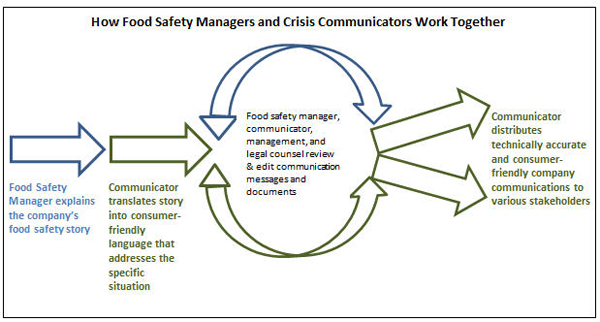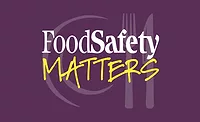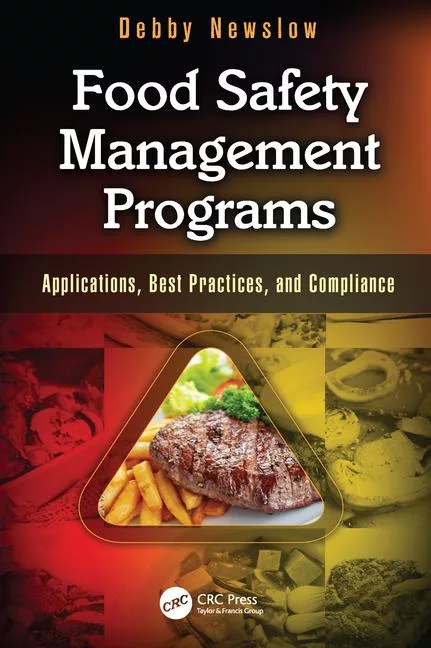Crisis Communications: The Story and the Storyteller

Crises can require unexpected pairings of resources and personalities in order for people and organizations to survive. In the case of a food recall, a company’s food safety manager and its crisis communicator make up the most unlikely of duos. But don’t underestimate the importance of this team to your company’s ability to survive. Despite the fact that the people who play these two roles may seldom have reason to speak to one another under normal business circumstances, during a food recall they should become the closest of colleagues.
 Early in my career as a crisis communicator, I was fortunate to work with a well-respected microbiologist who had the patience of a saint and took the time to explain to me in layperson’s terms the food safety world—or at least the small part I needed to know in order to effectively communicate about several high-profile food recalls. As a result, I know first-hand that when those who have the food safety knowledge and those who have the communication skills work together during a recall, consumers are better informed, customers are more confident, and the company conducting the recall benefits. One need only look at the 1993 Jack in the Box Escherichia coli outbreak to understand what poor communication can do (the company subsequently led significant industry-wide food safety changes and drastically improved its communications). Or to lettuce supplier Taylor Farms de Mexico as an example of how proper communication can mitigate brand damage—the company was named but never determined to be the source of a 2013 cyclospora outbreak.
Early in my career as a crisis communicator, I was fortunate to work with a well-respected microbiologist who had the patience of a saint and took the time to explain to me in layperson’s terms the food safety world—or at least the small part I needed to know in order to effectively communicate about several high-profile food recalls. As a result, I know first-hand that when those who have the food safety knowledge and those who have the communication skills work together during a recall, consumers are better informed, customers are more confident, and the company conducting the recall benefits. One need only look at the 1993 Jack in the Box Escherichia coli outbreak to understand what poor communication can do (the company subsequently led significant industry-wide food safety changes and drastically improved its communications). Or to lettuce supplier Taylor Farms de Mexico as an example of how proper communication can mitigate brand damage—the company was named but never determined to be the source of a 2013 cyclospora outbreak.
A company’s reputation, goodwill and ability to recover from a recall depend to a large part on the company’s pre-recall food safety measures; what the company does during the recall to protect public health; and what the company says it will do and does in the future to make its product safe. This is the food safety manager’s domain. But a company’s reputation, goodwill and ability to recover from a recall also depends on its ability to explain its food safety culture to many different stakeholders. So, there is a story that must be told and a storyteller who must ensure it is accurately conveyed to the people who need to hear it, delivered in ways that make them most likely to receive it, and that address their needs and concerns.
In other words, the food safety manager knows the story, and the communicator is the storyteller. So how does this pair work together to help a company through a food recall?
First, well before a recall situation, it is indispensable to have a single, 1–2 paragraph, consumer-ready description of the company’s food safety protocols and practices. This is different than the marketing language that may be found on a company’s website. It should be more detailed in its description of the technical processes but still be easy for the general public to understand. For example, saying that the company uses the latest food safety technology is marketing language. Saying that the company sanitizes its food production equipment daily using potable water and an anti-microbial wash is crisis communication language aimed at minimizing reputational damage.
To write the short description of the company’s food safety protocols and practices, the food safety manager should spend an hour or two with the communicator, explaining the company’s overall processes for the various products it handles. The communicator should be sure to understand which processes are proprietary and must, therefore, be treated differently in any communications.
After this time together, the communicator should draft the description and the food safety manager should review it for accuracy. This is an opportunity to practice communicating technical topics in layperson’s language and to generate public documents together. In doing so, the team will develop a common knowledge base and an understanding of how important every word is when communicating about a recall. For example, through this process it may happen that, in an effort to make the information easier to understand, communicators often use words such as wash and rinse, clean and disinfect interchangeably; but chances are they mean different things to a food safety manager. When these nuances are understood and common ground is established in advance, it will be easier for the company to generate meaningful, appropriate and accurate communications during an actual recall.
During a recall, the food safety manager and communicator should remain in regular contact. This will be challenging since both will be occupied with their respective crisis activities, but success depends on it. I try to talk to the food safety manager at least twice a day for the first 3 to 5 days and daily after that until the investigation is over. The communicator must be kept abreast of situational changes that affect what the company is saying publicly. And the food safety manager should review for accuracy any mention of the company’s food safety protocols.
It may seem odd that I am recommending that people in these two very different positions work so closely together, but a company that encourages and develops this type of collaboration as part of their recall planning will be better able during a crisis situation to clearly communicate what it was doing, is doing and will do regarding food safety. This in turn will minimize the potential for damage to the company’s reputation and brands, and project the company’s commitment to properly handle the recall and protect public health.
If you are a company executive, encourage people in food safety and communicator positions to work with each other. If you play either the food safety or recall communicator role in a company, call your counterpart and schedule a time to meet. It will pay off if you ever have to work a recall together.
Amy Philpott is accredited in public relations (APR) and a senior director at Watson Green LLC, a public communications firm in Washington, DC, specializing in reputation management and risk communications in the food and agricultural sectors. She assists companies and organizations in the fresh produce, nut and processed foods industries with crisis and recall communications. She develops, implements and evaluates crisis management plans, recall plans and media relations strategies.
>
Looking for quick answers on food safety topics?
Try Ask FSM, our new smart AI search tool.
Ask FSM →







